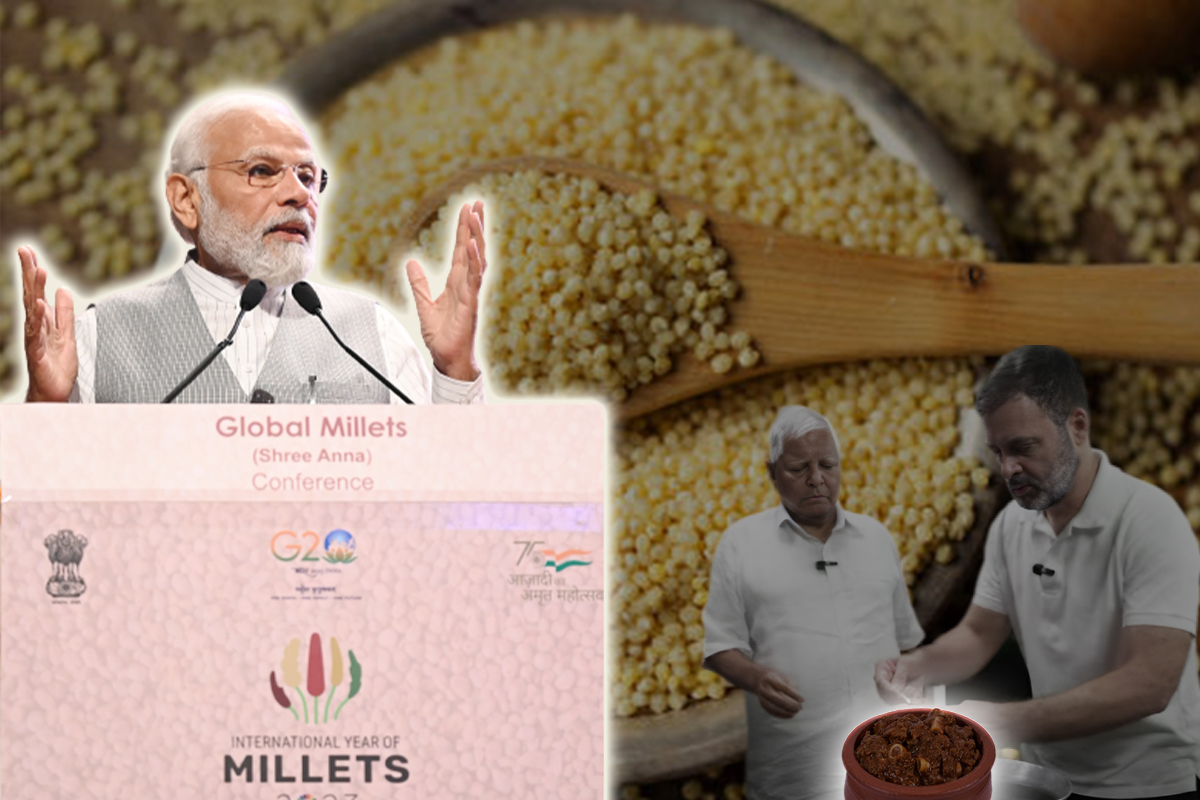The recent commentary over India’s promotion of millets and vegetarian food at G20 is much ado about nothing. While some critics may attempt to frame it as an imposition of a Hindutva agenda, a closer look reveals that it is, in fact, a clever and forward-thinking branding move on India’s part.
The discourse surrounding vegetarianism is increasingly acquiring a political colour. Rahul Gandhi cooking mutton with Lalu Prasad Yadav during the sacred month of Shravan was made into a political spectacle resulting in speculations about a brewing political battle centred around dietary choices. It seemed like a direct challenge to the Modi government’s promotion of vegetarianism. However, it would be silly and puerile to read the promotion of millets and vegetarian food at G20 through the political lens.
Critics ridiculed this decision, suggesting that it went against the preferences of delegates from meat-eating countries. But here’s where a significant point is missed.
During the G20 meeting, POTUS and other delegates will have the opportunity to experience millet-based dishes. However, it’s worth noting that they are not restricted from ordering food of their choice at hotel stay, and such expenses will be covered by the government. Criticism directed at limiting the dietary options for foreign delegates through the promotion of millet-based foods appears misguided and simplistic.
India has a diverse and extraordinary food culture that extends far beyond the world-famous chicken tikka masala. One facet of this culinary treasure trove is millets. These ancient grains, often overlooked on the international stage, offer exceptional nutritional value and are deeply rooted in India’s food heritage.
Millets represent a group of cereal grains categorised within the Poaceae family, commonly recognized as the grass family. These grains are a staple in the diets of many people across Africa and Asia, particularly in developing countries. Although they may resemble seeds, millets possess a nutritional composition akin to that of sorghum and various other cereals. Millets have garnered increasing popularity in Western countries due to their gluten-free nature and their remarkable richness in protein, fibre, and antioxidants.
They offer several benefits compared to other crops, such as their resistance to drought and pests. Additionally, they exhibit the ability to thrive in challenging environments and less fertile soil. These advantages arise from their genetic makeup and physical characteristics, including their small size and hardness.
Although millets have become a prominent dietary choice among the affluent, it’s important to note that jowar, bajra, ragi, kutki, kodo, sama, kangni, and cheena have long been integral components of the dietary habits of India’s economically disadvantaged population. The coarse nature of the grains made it unsuitable for consumption by upper-caste, upper class Indians. However, the government during its budget session renamed this group of food as “Shri Anna” giving it the much-needed respect and acceptance it has always deserved.
By presenting a variety of millet-based dishes to an international audience, India is not just promoting a healthy dietary choice but also showcasing its cultural richness and inclusivity. This strategic move aims to create a new global product identity that goes beyond stereotypes and clichés. It’s about making the world aware of the vast array of flavorful and nutritious options available in Indian cuisine, while simultaneously addressing global food security and environmental concerns.
Millet cultivation is sustainable, requires less water, and can thrive in challenging environments—traits that are increasingly crucial in the face of climate change. By putting millets in the spotlight, India sends a strong message about its commitment to sustainable agriculture and food security.
In a world grappling with food crises, health issues, and environmental challenges, India’s focus on millets and vegetarian food isn’t an imposition; it’s a beacon of hope and a smart branding move. It’s about embracing the future while cherishing its culinary traditions, all while contributing to the global fight against hunger and climate change.
Instead of criticising the G20’s choice of menu, we should applaud it as a visionary step in the right direction. India’s millet and vegetarian food promotion isn’t just a gastronomic choice; it’s a bold statement that highlights the nation’s commitment to a better, healthier, and more sustainable world. Let’s shift our focus from the pointless controversy and embrace the potential this move offers in building a brighter future.

